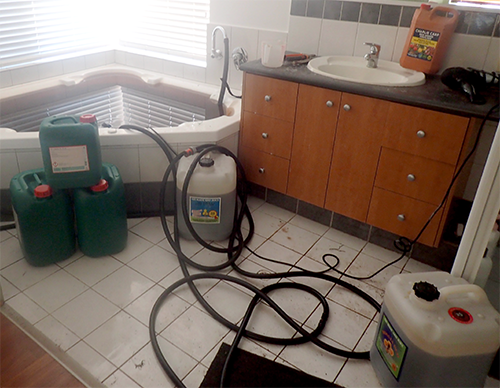Home
Cannabis "grow" houses
Cannabis "grow" houses
The guidance developed by the Department of Health is provided to advise local government authorities (LGA's) and others on the public health risks associated with cannabis grow houses and how these risks may be managed. Any response or regulatory action is at the discretion of LGAs.
Occurrence and risks
The Western Australian Police Force detects and responds to reports of crops of cannabis (marijuana) plants within residences, often grown hydroponically. Organised crime syndicates are usually involved and may target private rental properties for the purpose. Plants and any other illicit drugs and equipment associated with the cultivation will be removed by the Police. Police will also contact Western Power to make safe any illegal power or wiring modifications to the home. While police make an effort to ensure that physical hazards posing a serious and immediate risk are removed or mitigated, there may be remaining public health or structural safety issues in the building that need to be addressed.

The most significant risks at these premises are associated with physical safety during entry or assessment of the property, often as a result of impacts to the structural stability of the house. There may have been unauthorised alterations, including illegal and unsafe electrical modifications, removal of sections of walls or load bearing structural components, potential water damage and mould growth.
Chemicals may also be used in cannabis cultivation, including pesticides, fertilisers (some phosphate-based) and concentrated nutrient mixes containing trace elements and a range of heavy metals. These chemicals may remain at the property as a residue on surfaces or within its atmosphere through volatilisation.
If cannabis or other illicit drugs, such as methylamphetamine, have been smoked in the premises, they may also remain there as residues.
Management process
Where required, the Local Government Authority (LGA) may have a role in assessing any structural damage and the safety and integrity of any buildings. The repair work will likely need to be completed by appropriately skilled building, electrical and plumbing trades who can certify the work undertaken where required.
In the case of extensive
mould growth, a specialist cleaner may be necessary.
If the premises are visited by LGA officers, or other persons, prior to repair it is important that they take precautions against exposure to possible hazards as indicated below.
Pre-entry
Normally this would include site familiarisation, selection and use of appropriate personal protective equipment (PPE) and electrical safety checks.
Initial entry and inspection
Using PPE, an initial entry is made to make the site safe for the main inspection by way of ventilating the premises and identifying and highlighting any hazards. Ventilation is important if the building has been closed for an extended period of time and if mould is present.
PPE may include:
- a re-usable half or full-face respirator with ‘organic vapour’ and particulate filter cartridges
- disposable coveralls
- impervious gloves and boots.
The premises are then surveyed with a view to taking action on its clean-up and repair. Any disturbing activities should be minimised. PPE should be used for the inspection with selection of respiratory protection supported by a job safety analysis/risk assessment (e.g. a Class P2 disposable respirator may suffice once the building has been adequately ventilated).
More Information
Environmental Health Directorate
Phone: (08) 9222 2000
Email: clanlabs@health.wa.gov.au
Last reviewed: 13-09-2023
Produced by
Environmental Health Directorate